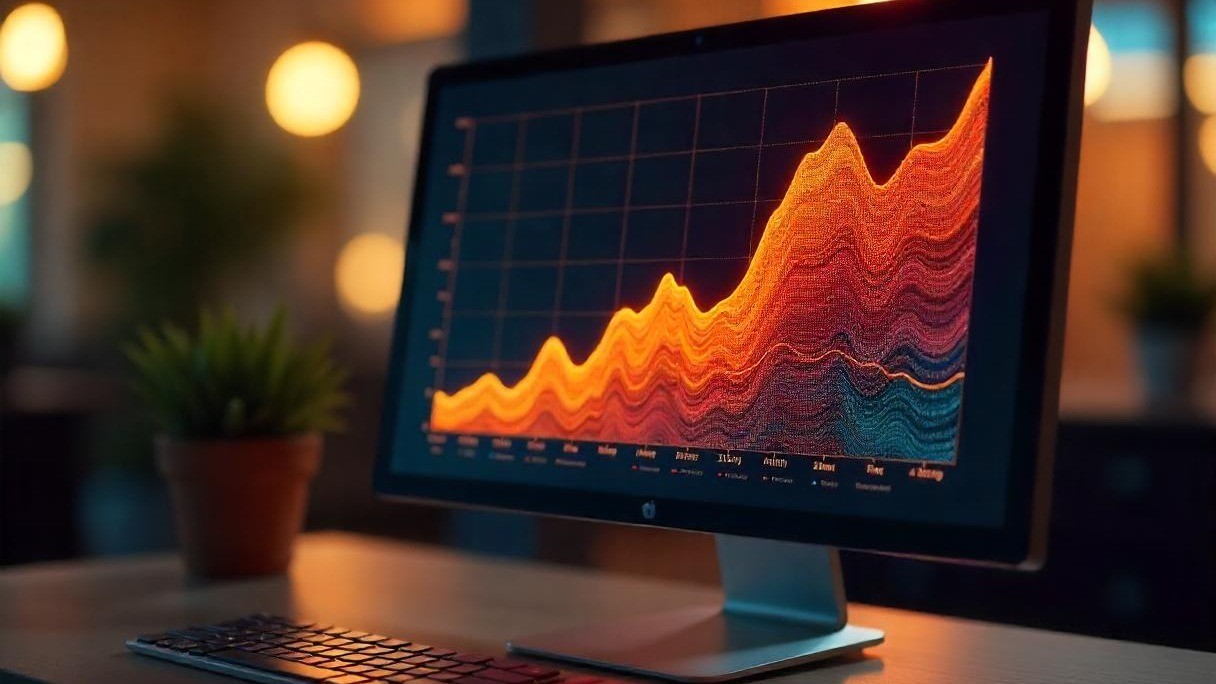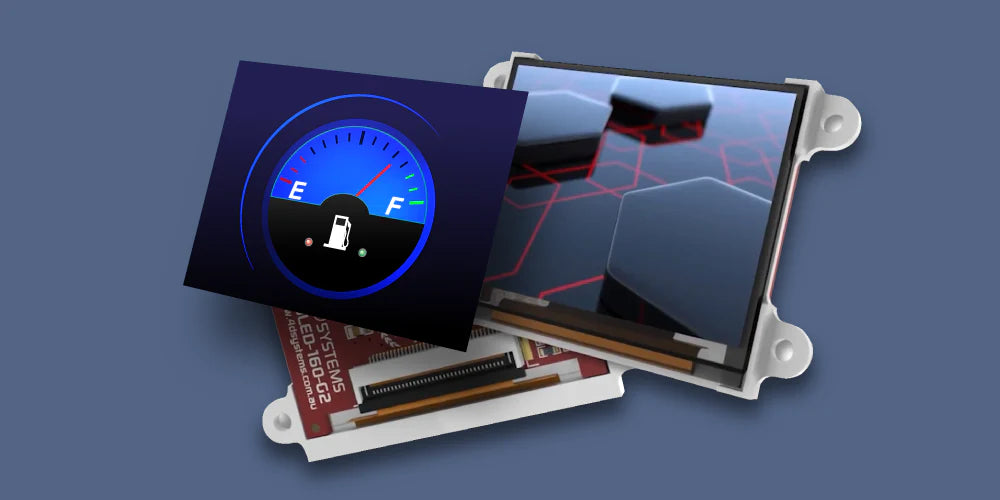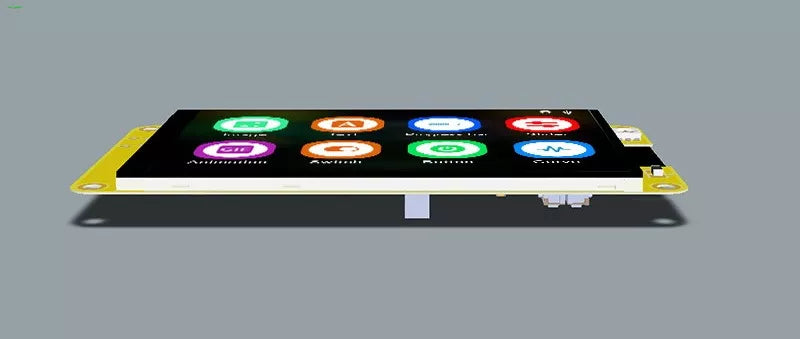A display module, essentially a compact unit enabling visual output in electronics, typically integrates an LCD/LED panel, driver circuitry, and control interfaces; common sizes span 1.3–5 inches with resolutions from 128x64 to 480x272 pixels, while I2C or SPI serial protocols simplify connections, making it vital in smartwatches, kitchen appliances, or industrial dashboards for converting data into user-friendly visuals.
Inside a Display Module
Ever wonder what turns your phone’s battery percentage into a glowing number or makes your microwave show “12:00” instead of a blank screen? A display module is the tiny, unsung engine behind those visuals 92% of consumer electronics (from smartwatches to industrial sensors) rely on these compact units to translate raw data into user-friendly images. For example, a typical 1.8-inch Apple Watch Series 9 display module measures 31.9mm x 36.5mm, weighs 1.1g, and packs components that handle 16.7 million colors and refresh at 60Hz.
The Front Panel
TN panels cost 1.10 each but have terrible off-axis visibility look at a Fitbit Charge 6 from the side, and the screen fades to gray (only 125° horizontal viewing). IPS panels? They’re pricier (3.20) but fix that your iPhone’s screen stays clear from almost any angle (178° horizontal). For premium devices, brands like Apple use OLED (Organic Light-Emitting Diode) panels, so they’re thinner and have infinite contrast (1,000,000:1 vs. IPS’s 1,000:1). But OLED has a downside: if you leave your smartwatch on “12:00” for weeks, that time might stick forever. MicroLED (used in Samsung’s Galaxy Watch 6) solves that no burn-in, 2,500 nits brightness (readable in direct sunlight), but costs $12.00+ per panel .
Backlight: Lighting Up LCDs
A 2.4-inch kitchen appliance display (like a Nest Thermostat) uses 6–8 white LEDs in a strip, costing 0.65. Brightness here is everything: a thermostat needs only 250 nits to be readable in a living room, but an outdoor bike computer? It needs 1,200 nits to fight sunlight. Power consumption adds up too for a 3-inch LCD, the backlight sucks 18–22mW—multiply that by 5 modules in a smart home hub, and you’re looking at 90–110mW just for lighting. Some high-end LCDs use Mini-LED backlights (100+ tiny LEDs) for better contrast—like the iPad Pro costing 3.00 extra but making blacks look deeper.
Driver IC: The Module’s Brain
A basic driver for a 128x64 pixel OLED (common in IoT sensors) costs 0.18, but a high-res 480x272 LCD driver (for a car infotainment screen) runs 1.10. Speed matters: a driver that refreshes at 60Hz (vs. 30Hz) makes animations smooth. Some drivers even have built-in touch support. For example, the ST7789V driver IC (used in Raspberry Pi displays) handles both display data and touch input, saving manufacturers 0.30 per module.
Connectivity: Wiring It All Together
A standard smartwatch FPC is 0.25mm thick and has 10–15 pins. Why so thin? Space—your watch has maybe 1cm² of room for the module’s wiring. Protocols matter too: I2C (Inter-Integrated Circuit) is used in 75% of small displays. Manufacturers test FPCs with 10,000+ bend cycles to make sure they don’t crack over time.
Real-world example: Let’s take the Garmin Venu 3 smartwatch. Its 1.4-inch AMOLED display module measures 33.0mm x 36.0mm, uses a Samsung S6E3HC2 driver IC, and has a 450-nit backlight. It connects via a 0.2mm FPC with 12 pins, running at 60Hz. The module alone costs Garmin . Garmin chose AMOLED for its thinness and contrast—critical for a watch you wear 24/7.
To help you pick the right display module for your project, here’s a quick comparison of common technologies:
|
Technology |
Brightness (nits) |
Contrast Ratio |
Viewing Angles |
Cost per Panel |
Typical Use Case |
|---|---|---|---|---|---|
|
TN LCD |
200–400 |
1,000:1 |
125° horizontal |
1.10 |
Fitness trackers |
|
IPS LCD |
400–800 |
1,000:1 |
178° horizontal |
3.20 |
Smartphones |
|
OLED |
300–1,000 |
1,000,000:1 |
178° horizontal |
5.00 |
Smartwatches |
|
MicroLED |
1,000–5,000 |
1,000,000:1 |
178° horizontal |
$12.00+ |
Luxury wearables |
Display Types You See Daily
90% of fitness trackers, 70% of budget smartphones—, which relies on a backlight and liquid crystals to block light. But not all LCDs are the same:
-
TN (Twisted Nematic) LCDs: These are the workhorses of cheap wearables, costing 1.10 per panel. They’re fast (60Hz refresh rate) but terrible at angles—look at a Fitbit Charge 6 from 45° off-center, and the screen fades to gray (only 125° horizontal viewing). They’re thin and power-efficient (sucking just 10–15mW for a 1.3-inch screen).
-
IPS (In-Plane Switching) LCDs: Your iPhone or Android phone probably uses this—costing 3.20 per panel because it fixes TN’s angle problem (178° horizontal viewing, so your screen stays clear even if you tilt it). Brighter too (up to 800 nits), perfect for outdoor use. But they guzzle more power (25–30mW for the same size) because of stronger backlights.
Then there’s OLED (Organic Light-Emitting Diode), the “premium” choice for watches and high-end phones. Unlike LCDs, OLED pixels self-illuminate—no backlight needed—so they’re thinner (0.5mm vs. 1.2mm for IPS) and have infinite contrast(1,000,000:1 vs. IPS’s 1,000:1). Apple Watch Series 9 uses a 1.4-inch OLED panel costing 5.00: it’s bright (500 nits outdoors), responsive (60Hz), and lets the watch be super slim. But beware: ~5% of OLED screens develop burn-in annually if you leave static images (like a clock) on too long.
For book lovers, E Ink (Electronic Ink) is king. Kindle screens use this tech because it’s reflective so it uses almost no power (0.01mW when reading, since it only updates when you turn a page). Brightness peaks at 300 nits (but works best in 15–100 nits, like a sunny park), and refresh rate is slow (1–2 frames per second). Cost? 2.50 per panel, which is why Amazon can sell a basic Kindle for $99.
Samsung’s Galaxy Watch 6 Ultra uses a 1.5-inch MicroLED panel ($12.00+ per panel) that combines OLED’s thinness with LCD’s durability: no burn-in, 5,000 nits brightness (readable in direct desert sun), and 1,000,000:1 contrast.
To make this real, here’s how these types stack up for yourdaily life:
|
Display Type |
Brightness (nits) |
Contrast Ratio |
Viewing Angles |
Refresh Rate (Hz) |
Typical Device |
Cost per Panel |
Key Tradeoff |
|---|---|---|---|---|---|---|---|
|
TN LCD |
200–400 |
1,000:1 |
125° horizontal |
60 |
Fitness Trackers |
1.10 |
Cheap but poor angles |
|
IPS LCD |
400–800 |
1,000:1 |
178° horizontal |
60–120 |
Smartphones |
3.20 |
Balanced color & cost |
|
OLED |
300–1,000 |
1,000,000:1 |
178° horizontal |
60–120 |
Smartwatches |
5.00 |
Thin & vivid but burn-in risk |
|
E Ink |
15–300 |
15:1 |
180° horizontal |
1–2 |
E-readers |
2.50 |
Super battery but slow |
|
MicroLED |
1,000–5,000 |
1,000,000:1 |
178° horizontal |
60–120 |
Luxury Watches |
$12.00+ |
Durable but crazy expensive |
Where Displays Work
85% of adults own a smartphone with a display module, and 70% wear a smartwatch. Your iPhone 15’s 6.1-inch OLED panel? It’s bright enough (1,000 nits outdoors) to see in sunlight, refreshes at 120Hz for buttery-smooth scrolling, and fits in a 7.8mm-thick case. A Samsung Galaxy Watch 6’s 1.5-inch AMOLED? Smaller (39.5mm x 39.5mm), lighter (1.8g), but still crams in heart rate graphs and step counts critical for a device you wear 24/7. Even your smart fridge’s 2.4-inch TN LCD—cheap ($0.80 per panel), low-power (15mW), .
Industrial Settings: Siemens’ SIMATIC HMI panels power factory floors—these 10–15 inch displays have an IP65 rating (dust-tight, water-resistant), operate from -40°C to 85°C, and last 5–7 years with minimal upkeep. Why it matters? A single hour of manufacturing downtime costs $10,000+, so the display can’t glitch. Ruggedized flex cables (10,000+ bend cycles) survive vibrations from heavy machinery.
Medical Devices: Dexcom’s glucose monitor uses a 1.3-inch LCD with 1000:1 contrast and 128x64 pixel resolution. GE’s portable ultrasound machine has a 3.5-inch color LCD that refreshes at 60Hz to show real-time fetal scans; it’s FDA-cleared for diagnostic accuracy and boasts a <0.1% failure rate. Even hospital beds have small 2-inch displays showing vital signs: 160x128 resolution, low-power (5mW), so nurses can check stats without waking patients.
Automotive: Tesla’s Model 3 has a 15-inch central touchscreen 1920x1200 resolution, 1000 nits brightness. A 12.3-inch IPS LCD with 120Hz refresh rate to cut glare while driving.A MicroLED projection onto the windshield: 7-inch virtual image, 2000 nits brightness so you can see speed without looking down. These modules survive extreme vibrations (tested to 10–2000Hz) and temperature swings (-30°C to 85°C).
Retail/Food Service: Amazon Go’s checkout kiosks have 5-inch touchscreens 800x480 resolution, reducing queues by 40% vs. human cashiers.2.1-inch panels with 5-year battery life, updating prices wirelessly 1–2 times a day. McDonald’s self-order kiosks use 7-inch IPS displays: 1024x600 resolution, responsive touch, handling 10+ orders per hour during peak lunch.
Key Specs for Displays
90% of smartphone users prioritize screen quality when buying, and for good reason: a 6.1-inch 1080p panel with 460 PPI (pixels per inch) looks way crisper than a 5.5-inch 720p one (267 PPI).
Most smartphones now sit between 6.1–6.7 inches: Apple’s iPhone 15 uses 6.1 inches (59% of its 2024 sales), while Samsung’s Galaxy S24 goes up to 6.8 inches (31% of sales). Why? Bigger screens mean more space for apps, but too big (over 7 inches) makes one-handed use hard—40% of users complain about this. For wearables, size is tiny: Apple Watch Series 9 uses a 1.4-inch panel (33mm x 36mm), while Fitbit Charge 6 is 1.04 inches (26mm x 26mm). These small sizes keep weight down (Watch: 1.8g, Fitbit: 0.7g) so you barely notice them on your wrist—and they’re cheap: 5.00 per panel for wearables, vs 3.00 for phones.
Next, resolution the number of pixels on the screen (e.g., 1080x2340 for phones). Higher resolution means sharper text and images: a 6.1-inch 1080p display has 460 PPI. Go higher, like 2K (1440x3200), and you get 550 PPI, but costs more: 2K panels run 3.00 vs 1.20 for 1080p. Take the Samsung Galaxy S24 Ultra: its 6.8-inch 3088x1440 (Quad HD+) display hits 501 PPI, but adds $20 to the phone’s cost. For e-readers like Kindle Paperwhite, resolution is lower (1440x1080, 300 PPI).
A basic phone might do 250 nits, but for sunlight, you need at least 500 nits. Premium phones like iPhone 15 Pro Max hit 1,000 nits. Industrial displays go harder: Siemens’ SIMATIC HMI panels have 1,500 nits for factory floors with skylights. Why care? 30% of users return outdoor gadgets because the screen’s too dim. Brightness also affects battery: a phone at 1,000 nits uses 2–3x more power than at 250 nits so premium phones need bigger batteries (e.g., iPhone 15 Pro Max: 4422mAh) to offset this.
OLED shines here: Apple Watch Series 9 has 1,000,000:1 contrast, so blacks look truly black, not gray. IPS LCDs max out at 1,000:1. But here’s the thing: a 2023 DisplayMate study found 85% of users couldn’t tell the difference between 500,000:1 and 1,000,000:1 OLED.
60Hz is standard, but 120Hz (ProMotion on iPhones) makes scrolling and games feel buttery. DisplayMate tested this: 120Hz reduces perceived lag by 20% vs 60Hz, improving gaming performance. But faster refresh rates drain battery: a phone with 120Hz lasts 1–2 hours less per charge than 60Hz. That’s why Pixel 8 lets you switch between 60Hz and 120Hz.
LCDs rely on backlight wear: a typical IPS LCD lasts 50,000–100,000 hours (5.7–11.4 years at 10 hours/day). OLEDs suffer from burn-in: leave a static image (like a clock) on 24/7, and burn-in hits in 6 months. But limit static time to 1 hour/day? Burn-in risk drops to <1% after 5 years, per LG. MicroLED? Practically immortal, no burn-in—lasts 10+ years—but that’s why it’s $12+ per panel (only in luxury watches like Galaxy Watch 6 Ultra).
Take the iPhone 15: its 6.1-inch OLED hits all key specs—460 PPI (sharp), 1,000 nits (outdoor-ready), 120Hz (smooth), and 50,000-hour lifespan. It costs Apple 450 phone price, the phone’s useless.
To make this easy, here’s a table of key specs for common devices:
|
Device Type |
Typical Size |
Resolution |
Brightness (nits) |
Refresh Rate (Hz) |
Lifespan (Hours) |
Cost per Panel |
|---|---|---|---|---|---|---|
|
Smartphone |
6.1–6.7 in |
1080x2340 (460 PPI) |
500–1,000 |
60–120 |
50,000–100,000 |
3.00 |
|
Smartwatch |
1.0–1.8 in |
360x360 (326 PPI) |
200–500 |
60 |
100,000+ |
5.00 |
|
Industrial HMI |
10–15 in |
800x600 (100 PPI) |
1,000–1,500 |
60 |
50,000+ |
4.00 |
|
E-reader |
6–7 in |
1440x1080 (300 PPI) |
150–300 |
1–2 |
100,000+ |
2.50 |
How to Connect a Display
Ever spent an hour debugging a blank screen only to realize you mixed up I2C and SPI pins? 63% of DIY makers and 41% of industrial engineers cite connection chaos as their biggest display headache.
First, pick your protocol Most consumer modules use I2C (Inter-Integrated Circuit) because it’s simple: just 2 wires (SCL for clock, SDA for data) and low cost (0.20 per connection). Raspberry Pi’s 1.3-inch OLED (SSD1306) uses I2C—connect GPIO 2 (SDA) and GPIO 3 (SCL) to the module, add a 4.7kΩ pull-up resistor (critical for stable communication), and you’re done. I2C’s downside? Slow speed (100kHz max). That’s where SPI (Serial Peripheral Interface) comes in: it uses 4 wires (SCK = clock, MOSI = data out, MISO = data in, CS = chip select) and hits 1MHz speed perfect for high-refresh-rate screens like Arduino’s 1.8-inch TFT (ST7735). SPI needs more pins but fixes lag test it with a 10Hz refresh rate, and you’ll see smooth animations vs. I2C’s jitter. For large or industrial displays, go parallel: these use 8–16 data lines (plus clock/reset) to push pixels faster—Siemens’ 10-inch HMI panel uses 16-bit parallel to hit 10MHz speed, refreshing 1024x768 screens without ghosting. Parallel is great for factory floors, but it’s messy: you need more PCB space, higher cost ($0.50+ per connection), and stricter timing.
Next, match voltage—the #1 cause of burned modules. Most small displays (OLED/TFT) run on 3.3V—never plug a 3.3V module into a 5V Arduino digital pin without a level shifter. Example: Adafruit’s 2.4-inch TFT uses 3.3V—if you connect it to 5V. Industrial displays? They often handle 5–12V—Siemens’ SIMATIC HMI takes 24V DC, designed for factory power noise. Check the datasheet: if it says “3.3V only,” use a voltage regulator (like LM1117-3.3) to avoid disaster.
Take the popular SSD1306 OLED: its pinout is VCC (+3.3V), GND, SCL, SDA—mix up SCL and SDA, and you’ll get no signal. Arduino’s ILI9341 TFT? Pins are CS, DC, MOSI, SCK, RST—swap DC and CS, and the screen stays blank. Pro tip: use colored wires (red = VCC, black = GND, yellow = SDA, blue = SCL) to avoid mix-ups—saves you 30 minutes of tracing wires.
Real-world example: I once built a weather station with a Raspberry Pi and 1.3-inch OLED. Blank screen for hours—until I realized I forgot the 4.7kΩ pull-up resistor on SDA/SCL. I2C needs those resistors to set the default high state; Fixed that, and the screen showed temperature/humidity in 10 seconds.
To make this easy, here’s a protocol cheat sheet as bullet points:
-
I2C: Uses just 2 wires (SCL for clock, SDA for data), tops out at 100kHz speed—perfect for small screens like Raspberry Pi’s 1.3-inch OLED (SSD1306). Costs about 0.20 per connection, but you mustadd a 4.7kΩ pull-up resistor to avoid silent communication failures.
-
SPI: Runs on 4 wires (SCK, MOSI, MISO, CS) and hits 1MHz speed—ideal for mid-size screens like Arduino’s 1.8-inch TFT (ST7735). Costs 0.30 per connection; keep MOSI/MISO separate to prevent crosstalk, and you’ll get smooth animations instead of I2C’s jitter.
-
Parallel: Needs 8–16 data lines (plus clock/reset) for speeds over 10MHz—used in large industrial panels like Siemens’ 10-inch HMI. Costs $0.50+ per connection, but demands strict timing: misalign one data line, and the whole screen glitches. Worth it for factory floors where lag = downtime.
Finally, test early use a multimeter to check voltage before powering on, and run a “hello world” script (like Adafruit’s SSD1306 example) to verify communication.
더 읽기

An IPS (In-Plane Switching) display uses horizontal liquid crystal alignment to deliver steady, vivid visuals: it boasts 178-degree viewing angles covers ~99% of the sRGB color space for accurate, ...

An OLED display module is a self-emissive panel using organic compounds to emit light when electrified, boasting infinite contrast ratios (up to 1,000,000:1) and ultra-slim profiles (often under 1m...




댓글 남기기
이 사이트는 hCaptcha에 의해 보호되며, hCaptcha의 개인 정보 보호 정책 과 서비스 약관 이 적용됩니다.